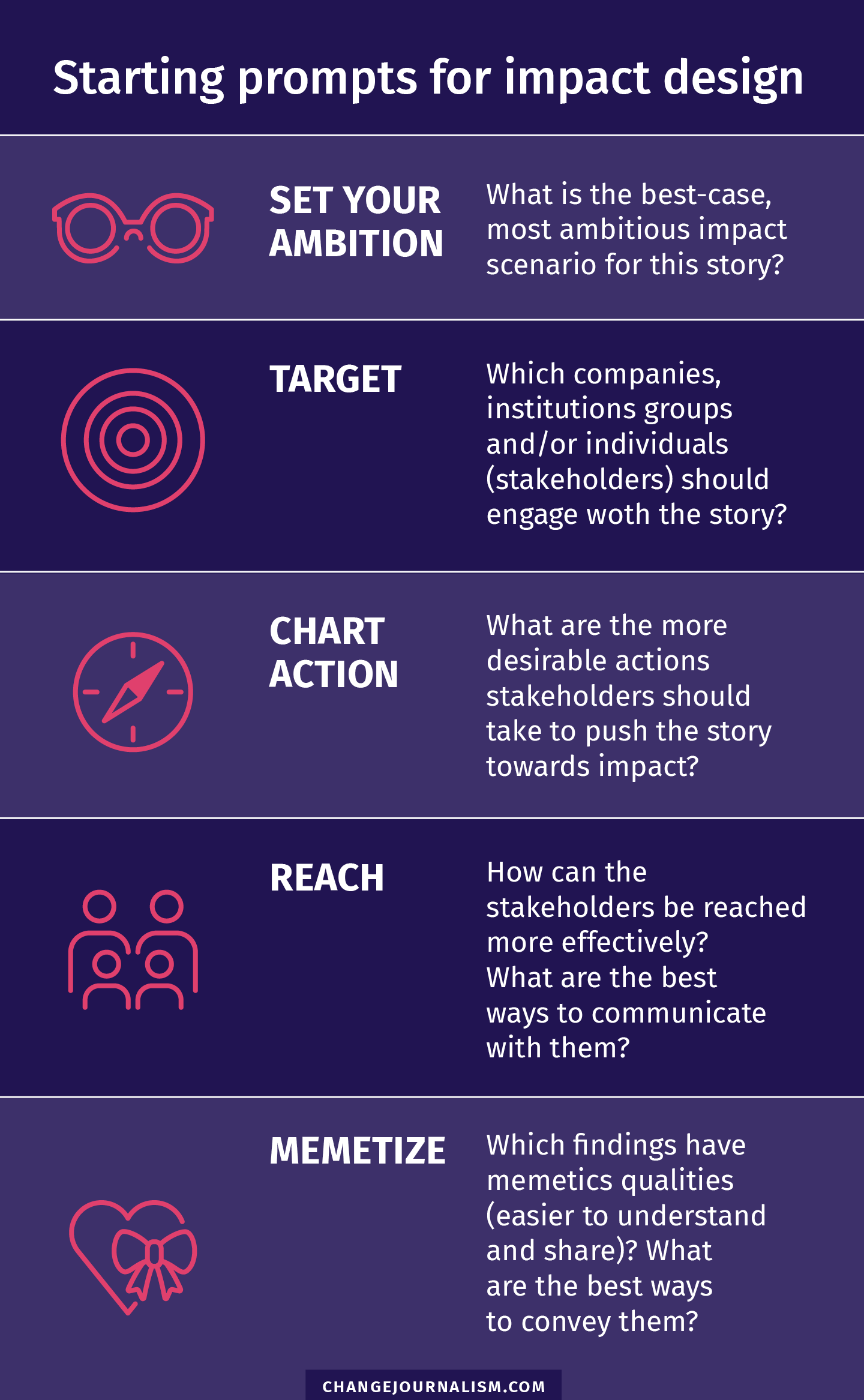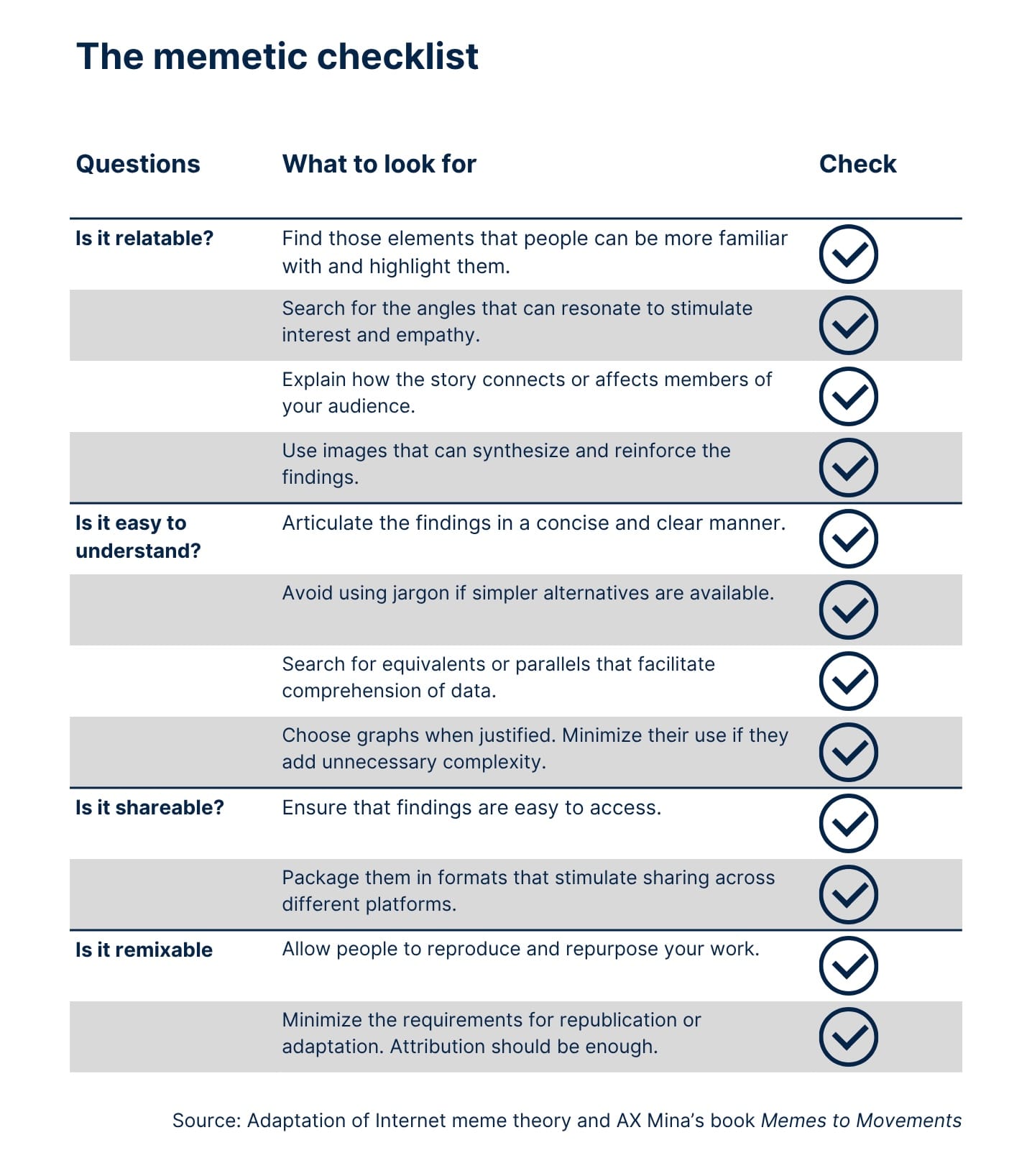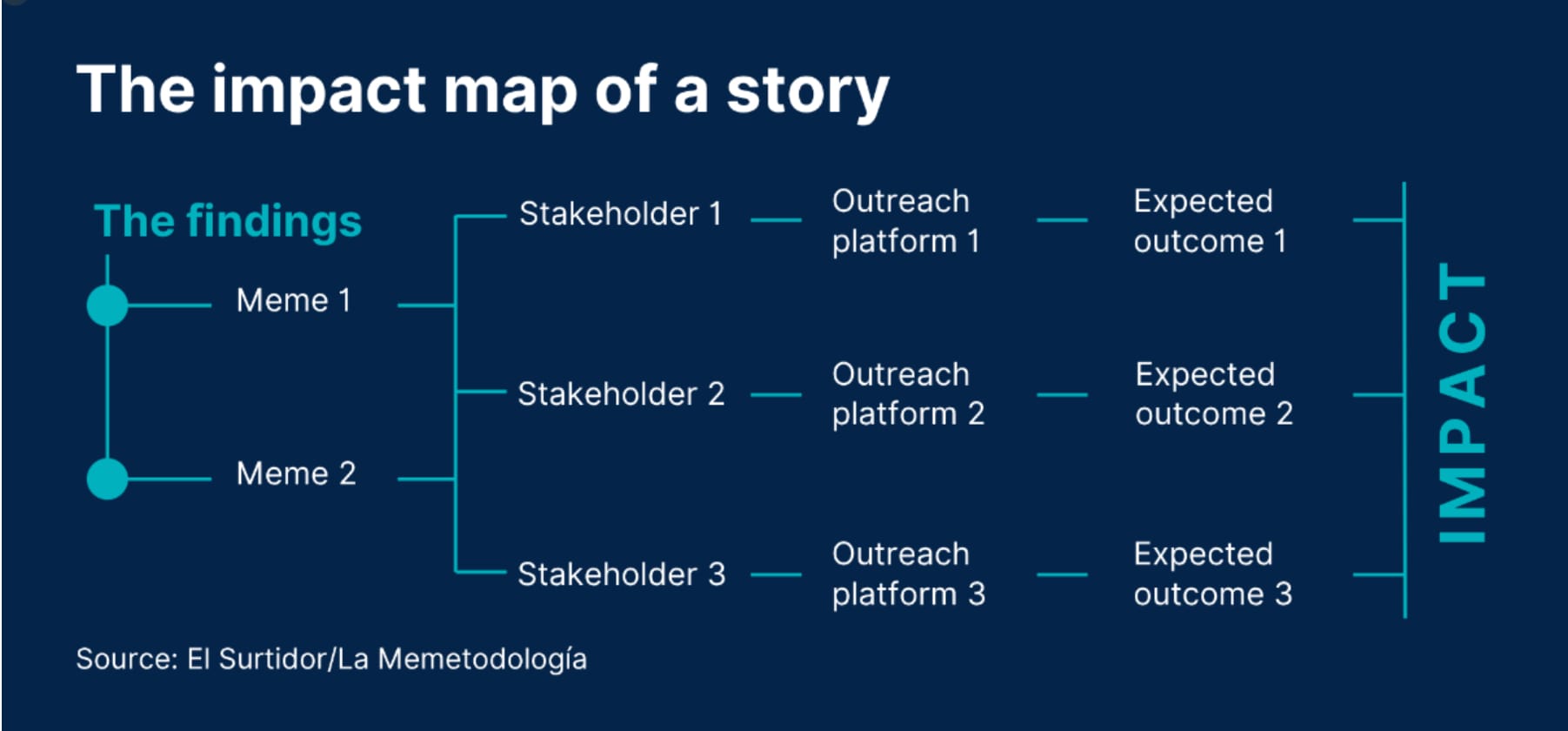La Memetodología: three planning tools for change
At El Surti, we have borrowed from meme theory, agile design, product thinking and other frameworks to develop our own impact-planning framework. It’s what we call La Memetodología (Memethodology), and it informs how we work to realise our tagline – “information for action”– in the digital era.
When La Memetodología is applied, we have seen how impact prospects grow. The process begins once a journalist has gathered early story findings. Instead of rushing to publish, we use a set of starting prompt questions that guide a conversation in the newsroom and facilitate the impact design of the story.
Each question allows us to reflect on what our strengths and limitations are. The answers align every decision – from graphic design aspects to distribution strategies – behind a common vision of change.

The first question, about the best-case impact scenario of a story, views the early findings through the lens of our impact tracker, which accounts for both quantitative and qualitive indicators.
The next three questions define the potential stakeholders of a story. They help us think about who we know and what virtuous connections we can stimulate.
This usually includes the usual expert sources, but might also include people who have registered and attended one of our public events, or are simply loyal followers of our work. We maintain a customer database to facilitate that work. It includes profiles from academia, media, civil society, advocacy groups, private sector and public officials.
Finally, we turn to our memetic checklist to decide which findings to focus on for outreach work. Inspired by AX Mina’s book Memes to Movements, this framework reminds us of what makes memes powerful units of information and how to emulate them. It helps our team make story findings easier to relate to, understand, share, and adapt.

With the answers to all of these questions, a story’s impact journey comes into focus. Now our impact map helps us list key stakeholders, outlines how they might engage with the story, and anticipates potential outcomes.
These may range from short-term effects like awareness, amplification, or grassroots mobilisation, to more systemic shifts in power — like official investigations (such as a parliamentary inquiry), accountability hearings, policy reform (such as new safety laws), or the adoption of new legal or ethical frameworks (such as environmental protections).
